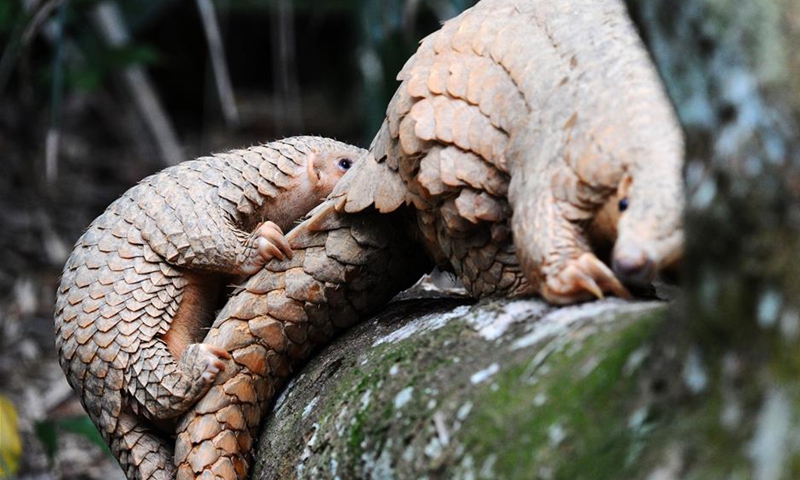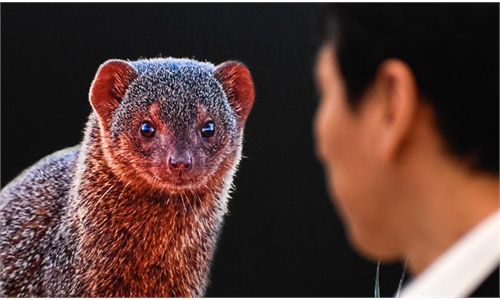China steps up wildlife animal protection by adding 517 new species to protection list

File photo of a baby Sunda pangolin and its mother Photo: Xinhua
A total of 988 species of wildlife animals, including 517 newly added animals, are now on the amended National List of Protected Wild Animals, which Chinese experts say poses quite a challenge for wild animal conservation efforts.
According to the official website of China's National Forestry and Grassland Administration, the amended list includes a total of 980 species and eight classes of wild animals. The national first-level protected wild animals section includes 234 species and one class, while the second-level section contains 746 species and seven classes. Among these, 686 species are terrestrial wild animals and 294 species and eight classes are aquatic.
The list, which was amended in February, underwent two main changes. First, 65 species, including the dhole and the finless porpoise, have been upgraded from second-level to national first-level protected wild animals. Meanwhile, three wild animals - the Assam macaque, Siberian ibex and Myanmar python - have been lowered from the fist-level to the second due to their stable populations and wide area of distribution.
Tibetan antelope and kiang, a wild ass native to the Tibetan Plateau, were also set to be downgraded to the second-level, but remained at first-level due to concerns that reduced penalties could lead to a rebound in poaching and threaten the survival of the species, the People's Daily reported on Wednesday.
The second main change saw 517 species be added to the list. Among them, 43 species, including the large-spotted civet, were listed included in the first-level and 474 other species, including wolves, were listed as second-level.
Sun Quanhui, a scientist from the World Animal Protection organization, told the Global Times on Wednesday that some of the newly added wild animals were endangered species whose populations or distribution areas have decreased significantly, and some are newly discovered species like the Myanmar Snub-nosed Monkey, which urgently need more field research and stronger protections.
This is the first major adjustment made to the list since it was released in January 1989, except for the addition of the musk deer and the pangolin as first-level protected wild animals in 2003 and 2020 respectively, according to the National Forestry and Grassland Administration website.
Shi Kun, director of the Wildlife Research Institute of Beijing Forestry University, told the Global Times that since pangolins were listed in 2020 China has taken a series of actions to protect them, including banning pangolin scales in traditional Chinese medicine, severely crack down on illegal transactions, smuggling and overeating of pangolins and their products and establishing a pangolin research center.
Considering the large number of wild animals, Chinese experts say that protection efforts will be quite arduous, but that the implementation is also highly significant.
"The department of wildlife protection will do a good job to gather information on the newly added wild animals, and study and formulate various protection measures to match the new list," Sun said, adding that educating the public to enhance awareness of wildlife protection is also very important.
According to the announcement, the list will be readopted every five years, which Shi said will enable the list to benefit from the latest scientific research results and progress of endangered species.
"The regular update of the list will become a time-sensitive and authoritative reference in the field, and provide guidelines for conservation researchers," said Shi.


